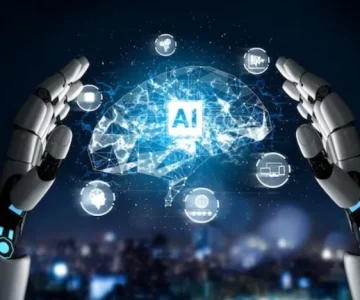Technology has always been a driving force in reshaping education, but one of the most exciting innovations in recent years is Generative Artificial Intelligence. This branch of AI uses advanced algorithms to create new content—whether text, images, or even music—by learning from existing examples. Its potential to revolutionize teaching methods, personalize lessons, and improve communication between students and educators is rapidly becoming a reality.
The Growing Role of Generative AI in Education
Generative AI is not just about automation—it’s about enhancing the entire learning process. By analyzing vast amounts of data, it can adapt educational content to meet the needs of each individual learner. This shift from a one-size-fits-all approach to tailored learning experiences is making classrooms more dynamic and interactive than ever before.
Practical Applications in Learning Environments
The possibilities for incorporating Generative AI into education are extensive:
- Custom Learning Materials: AI can create curriculum-specific quizzes, worksheets, and even textbooks that align with student skill levels.
- Adaptive Learning Paths: By tracking performance, AI can adjust lesson plans and teaching methods to suit each student’s pace and style.
- 24/7 Learning Assistants: Virtual AI tutors can provide instant answers, give real-time feedback, and adapt their approach based on ongoing interactions.
- Immersive Language Practice: Through realistic simulations and interactive dialogues, AI can help learners practice communication skills in different contexts.
- Automated Assessments: AI can handle grading and offer detailed feedback, freeing teachers to focus more on mentoring and personal guidance.
Key Benefits for Students and Educators
Generative AI is reshaping education in ways that benefit both teachers and learners:
- Personalization: Each student receives resources tailored to their needs, leading to greater engagement and understanding.
- Time Savings: Automated grading and content creation reduce administrative workloads for educators.
- Inclusivity: AI tools can adapt to various learning styles and accessibility needs.
- Engagement: Interactive, AI-driven activities keep students motivated and curious.
Ensuring Ethical and Responsible Use
While the advantages are clear, the integration of Generative AI must be handled thoughtfully:
- Ethical Standards: AI systems should be transparent, fair, and inclusive to avoid bias.
- Digital Literacy: Students need the skills to critically assess and responsibly use AI tools.
- Human-AI Collaboration: The best results come when AI supports, rather than replaces, the expertise of educators.
Final Thoughts
Generative AI is opening doors to a more personalized, inclusive, and engaging classroom experience. From adaptive learning paths to instant feedback, its applications are transforming how we teach and learn. Yet, its success depends on responsible implementation—balancing innovation with ethical considerations. By combining the strengths of AI with the human touch of educators, we can create learning environments that truly empower every student.





